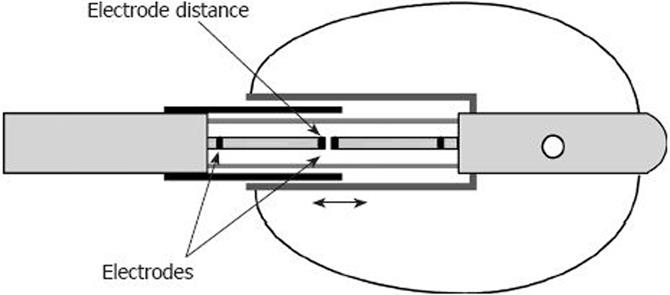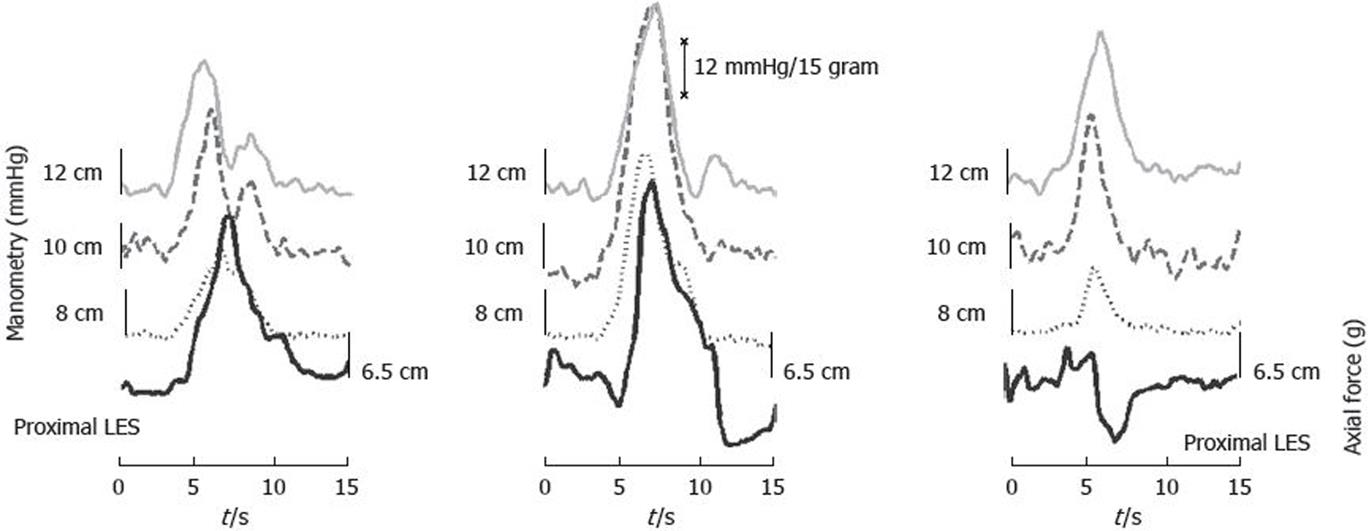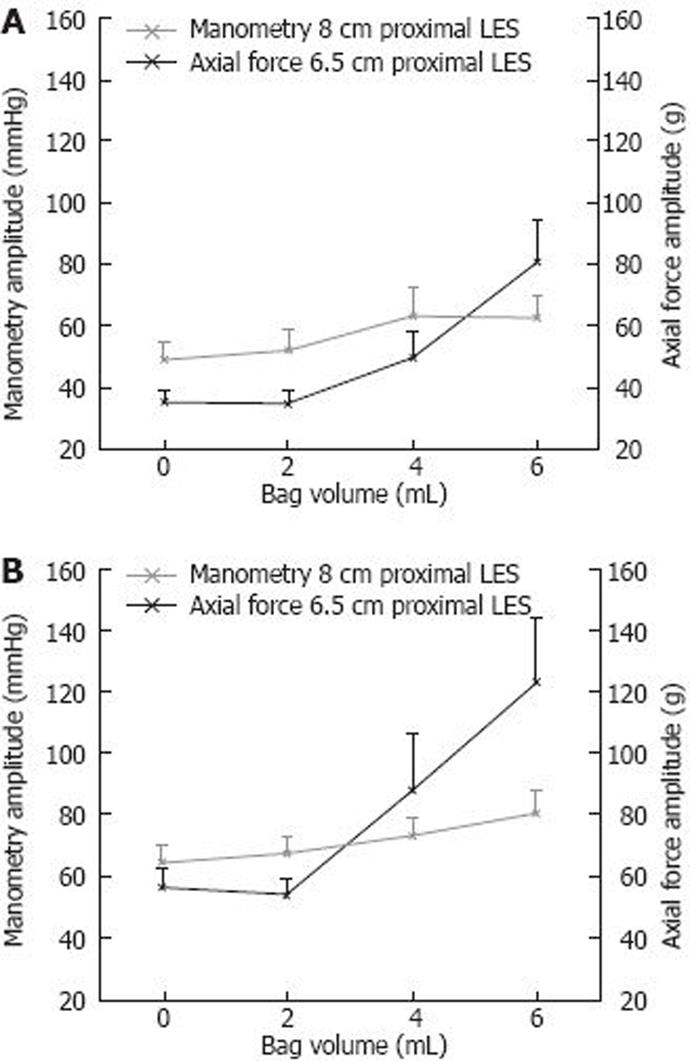Copyright
©2009 The WJG Press and Baishideng.
World J Gastroenterol. Jan 14, 2009; 15(2): 139-143
Published online Jan 14, 2009. doi: 10.3748/wjg.15.139
Published online Jan 14, 2009. doi: 10.3748/wjg.15.139
Figure 1 The redesign of impedance planimetry has enabled measurements of axial force instead of changed in cross-sectional area.
The variable in the redesign is the distance between the detecting electrodes. This distance can be related to axial force by means of calibration. Any axial force applied to the bag will increase the distance between the electrodes. The thick black and dark gray lines represents rigid plastic cylinders that ensures that the construction will not bend. The design also enables the bag to be inflated in vivo.
Figure 2 A voluntary dry swallow (time = 0) from three subjects with a bag volume of 2 mL.
The solid black tracings are the axial force recorded 6.5 cm proximal to the lower esophageal sphincter, and the three other tracings are the pressure recorded 12 cm, 10 cm and 8 cm proximal to the lower esophageal sphincter. Using the manometric tracings, the first swallow (left) showed a normal propagating peristaltic wave and the resulting axial force response was as expected. The swallow of the second subject (middle tracings) shows a rather powerful pressure amplitude; but, it is not propagating (peak amplitudes are similar in time). In contrast, the axial force response is comparable in amplitude to that in the first subject (left tracings) although it is followed by axial force in the oral direction (negative value). In this case, the interpretation of the manometric recording would be flawed if the axial force had not been recorded simultaneously. The third person (right tracings) had lower manometric amplitudes during swallowing, without any propagation. The axial force response is different from the swallowing in the second person (middle tracings), as there is a weak reflux (oral axial force). The data shown is taken from a study in our group where the data is still being analyzed.
Figure 3 Swallow test with increased bag volume.
A: Dry swallow; B: Wet swallow. The pressure was recorded 8 cm proximal to the lower esophageal sphincter and the axial force was recorded 6.5 cm proximal to the lower esophageal sphincter. Both graphs show that the increased amplitude for axial force was greater when compared to manometry during both dry and wet swallows. Data are presented as mean ± SE from 10 volunteers.
- Citation: Gravesen FH, Funch-Jensen P, Gregersen H, Drewes AM. Axial force measurement for esophageal function testing. World J Gastroenterol 2009; 15(2): 139-143
- URL: https://www.wjgnet.com/1007-9327/full/v15/i2/139.htm
- DOI: https://dx.doi.org/10.3748/wjg.15.139











